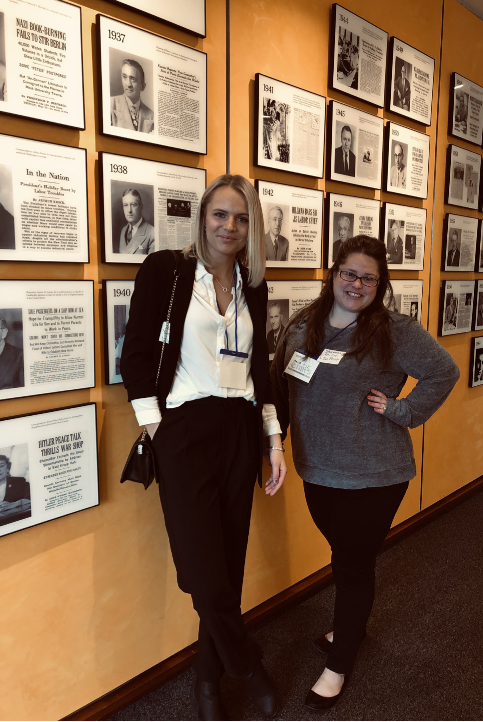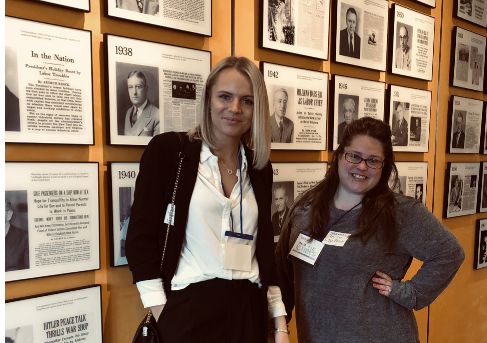Last updated on Mar 14, 2020
By Shannon Miller
Assistant News Editor
A feeling of intimidation rushed over me as I looked up at the 52-story New York Times building early Friday morning. Knowing I was about to attend their Student Newspaper Editor’s Workshop was a surreal moment; it’s every aspiring journalist’s dream. I expected to acquire the skills and tools necessary to succeed in the business, but I never anticipated leaving on the whim that the most prestigious

The stress gradually dissipated as I realized we weren’t just there to learn from
Lindsey Underwood,
Gen Z is the most diverse generation yet, and they’re the first to never know a world without the internet or
The Times has been printing “all the news that’s fit to print” since 1851, and since then, it has remained committed to an authoritative voice and an avoidance of sensationalism to preserve its traditional values and reputation. But the speed of information is picking up quickly, according to Sam Dolnick, who
During Dolnick’s workshop, he introduced us to what he considers to be modern journalism. “Reading a quote is one thing,” he said, “but to hear and see it is a whole other experience.” He helped launch The Daily – a twenty-minute podcast that delivers the news before 6 a.m., Monday through Friday. The show’s host Michael Barbaro, represents the human factor, asking the questions the readers want the answers to.

Dolnick stresses though, that while the paper is trying to import digital values into its print work, it must also include its tradition of rigorous reporting in its visual and audio formats.
“It’s a thrilling time to be a journalist….it’s liberating,” Dolnick said. “People care about journalism a lot more now than they did five or six years ago.”
But keeping the attention of readers is a conundrum that institutional news outlets face. It requires careful tweaking of conventional journalism. Editors and reporters must steer clear of headlines that may be mistaken for clickbait, while also giving readers and subscribers a reason to come back more often.
Megan Louttit,
Now, the journalist in me must offer this disclaimer: I’m not a member of Gen Z. I guess I land somewhere between Generation Y and being a millennial. I’m a pro at Facebook and Instagram, but I too struggle at times to understand my classmates and how they think – but as time goes on, I get better at it.
I recall dreaming about one day seeing a story of mine featured in the New York Times. I can remember being stuck on the side of the road without a cellphone; I remember needing a newspaper to find out what time a movie starts at the cineplex
Traditional journalism has been undermined by the virtual-social world that changes so fast, us older folk can’t keep up. Gen Z is compiled of technologically savvy, young adults with media stamina. I hope they understand the importance of newspapers such as The New York Times, which include verifiable, thorough, “boots on the ground” reporting – because






Such a great article!
Print news is so important!
That is great that the New York Times felt it so important to include GenX!